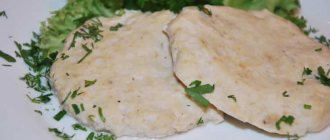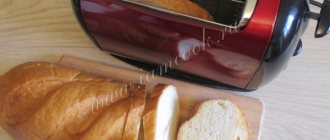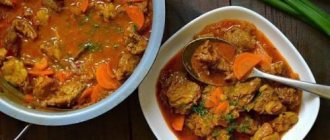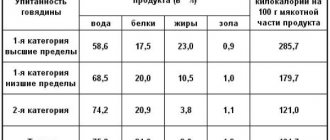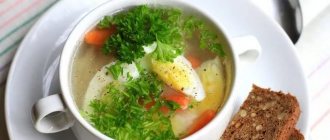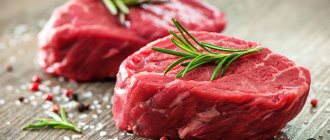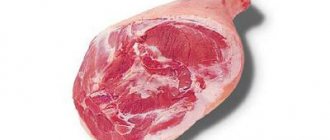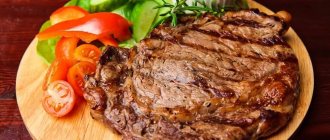Home / DIY gazebo oven Meatballs are a dish made from minced meat and have the shape of a ball the size of a walnut or slightly smaller.
Meatballs are included in the menu of children's, dietary and medical nutrition, including the diet for pancreatitis. How to make meatballs from minced meat, read on. Soup with meatballs turns out tasty, aromatic, satisfying. The soup preparation time is minimal. The taste variations of meatball soup are different - they depend on the composition of the minced meat and on the ingredients included in the soup.
To answer the question of how to make meatballs
, let's define their types:
Types of meatballs:
- meatballs;
- fish balls;
- poultry meatballs.
General information:
- Finely chopped onions and spices are added to the minced meat; greens are allowed according to the recipe.
- Adding eggs to the minced meat is possible, but the broth will lose transparency.
- It is possible to add loaf (bread) soaked in water or milk to the minced meat. At the same time, the consistency of the minced meat becomes more elastic.
- But the introduction of cereals or vegetables is unacceptable. Minced meat with cereals or vegetables is not meatballs, these are meatballs.
Type of meatball processing:
- Cooking in boiling water, broth or soup.
If you saw somewhere a recipe for “fried meatballs,” then I will answer you - these are not meatballs! These are small meatballs, cutlets or zrazy, etc... Meatballs are just boiled! - in water, broth, soup.
Properties of meatballs
How much do meatballs cost (average price for 1 kg)?
Throughout the history of human civilization, the basis of the human diet has been meat products. No one can dispute the fact that meat is considered one of the most popular and sought-after food products today. There are a huge number of recipes for cooking meat that can be easily found in the national culinary traditions of the entire population of planet Earth.
The most common types of meat used in the food industry today are pork, veal, as well as beef, lamb and horse meat. In addition, the meat of exotic animals and even reptiles is eaten. The taste, consumer and beneficial characteristics of meat products depend primarily on the type of meat that was used in the process of preparing the culinary product.
It is worth noting that at all times, meat fillet or whole pieces of meat have been especially popular and in demand. However, not all segments of the population could afford to enjoy the taste of pork or beef tenderloin all the time. It is thanks to the imagination and ingenuity of poor people that modern housewives have in their arsenal such meat products as cutlets, minced meat or meatballs.
People tried to preserve all the valuable components of the meat carcass, so dishes based on minced meat, which remained after separating large pieces, became popular. Such a meat product as meatballs has long been popular not only in our latitudes, but also in Europe.
Meatballs got their original name thanks to the Italian language and the word frittatella, which literally means “fried.” Nowadays, meatballs are classified as ready-made semi-finished meat products, which can be easily purchased in many grocery stores in the country. However, just a few decades ago, Soviet householders prepared meatballs on their own.
Composition of meatballs
There are perhaps two main types of meatballs - meat and fish. In addition to minced meat or fish, meatballs also contain other ingredients. As a rule, in addition to the meat component, meatballs include onions, various spices and herbs. In addition, cereals, such as rice, as well as pre-soaked bread or a loaf, are added to the minced meatballs.
Typically, meatballs are made round in shape and not larger than a walnut in size. The calorie content of meatballs depends on the type of meat, as well as other components used in the cooking process. However, the average caloric content of meatballs is 263 kcal, which is per 100 grams of product.
Meatballs are served as a separate dish, in sauces with a side dish of potatoes, rice or pasta. In addition, meatballs are considered a mandatory attribute when preparing some types of soups.
What determines the nutritional value of a dish?
It is clear that the calorie content of any dish depends on its components. Therefore, if you change the classic one with balls, then its nutritional value will also change.
How to increase the calorie content of meatball soup to 60-65 calories per 100 grams of dish:
- replace chicken broth with fatty pork broth;
- make meat balls not from minced beef, but, for example, from duck or pork;
- add one more ingredient - mushrooms;
- Season the finished soup with rich sour cream.
How to reduce the nutritional value of this first dish to 30 calories per 100 grams:
- cook soup with water or vegetable broth;
- “blind” meat balls from minced chicken;
- do not use rice or any other grain.
Cook with pleasure. Bon appetit!
Initially, this was the name for a piece of meat on the bone, but in the 19th century, taverns began to serve juicy “chopped cutlets” that everyone liked. For example, even A.S. Pushkin, in poetic form, recommended trying “Pozharsky Cutlets” from an innkeeper in Torzhok to one of his friends.
Although the dish was borrowed from Europeans, it is considered Russian, since its preparation recipe was completely changed over time.
The benefits and harms of cutlets
The benefits and harms of cutlets are determined by the type of meat used to prepare them.
- Beef is a source of complete iron and protein
, which is very useful for hematopoiesis and saturating the body with oxygen.
In addition, the vitamin B12 present in it promotes the complete and rapid absorption of iron. Collagen contained in beef is involved in the “construction” of interarticular ligaments, and zinc helps improve immunity. Moreover, all fried foods contain carcinogens that cause cancer; beef meat contains cholesterol
, which can trigger the development of cardiovascular diseases. - Pork is rich in magnesium and zinc, which help the functioning of blood vessels and the heart
, fats restore strength, and lysine forms bone tissue.
Selenium and arachidonic acid “treat” depression and improve the process of cell renewal in the body. At the same time, you should avoid eating pork if you have vascular or heart disease, since meat contains a huge amount of cholesterol. Histamines can cause allergies
and all kinds of inflammatory processes of the skin. Poorly cooked pork may contain helminths. - Chicken meat is good for the nervous system, heart, immunity, helps regulate cholesterol levels
, and nourishes the body with easily digestible vitamins, amino acids and microelements. Indicated for elderly people, children weakened by long-term illnesses. Helps reduce acidity, thereby relieving pain from gastritis and stomach ulcers. You should not overeat chicken meat, otherwise putrefactive processes in the intestines may be activated. And people with individual protein intolerance should avoid chicken.
And, of course, the healthiest cutlets are homemade steamed cutlets made from fresh meat. In addition, the calorie content of homemade cutlets is significantly lower than store-bought ones.
Calorie content of cutlets
The table shows data on cutlets weighing 60 g.
The calorie content of cutlets from different types of meat is averaged.
| Calorie content per 100g | Calorie content of 1 piece | |
| Calorie content of fried cutlets | ||
| Calorie content of chicken cutlet | 119 kcal | 71 kcal |
| Calorie content of fish cutlet | 164 kcal | 97 kcal |
| Calorie content of vegetable cutlet | 105 kcal | 63 kcal |
| Calorie content of pork cutlet | 345 kcal | 207 kcal |
| Beef cutlet calories | 234 kcal | 140 kcal |
| Calorie content | 267 kcal | 160 kcal |
| Turkey cutlet calories | 184 kcal | 110 kcal |
| of steamed cutlets | ||
| Calorie content of chicken cutlet | 84 kcal | 50 kcal |
| Calorie content of fish cutlet | 125 kcal | 75 kcal |
| Calorie content of vegetable cutlet | 52 kcal | 31 kcal |
| Calorie content of pork cutlet | 290 kcal | 174 kcal |
| Beef cutlet calories | 172 kcal | 103 kcal |
| Calorie content of pork and beef cutlets | 198 kcal | 119 kcal |
| Turkey cutlet calories | 145 kcal | 87 kcal |
How to improve the taste of cutlets
To improve the taste of the cutlets, make them juicy and soft, you should add
any of the following ingredients:
- pieces of white bread (in a ratio of 1:10), dipped in cream or milk;
- onions in a ratio of 1:2 (1 part onion, 2 parts meat);
- various vegetables in a 1:2 ratio (carrots, zucchini, eggplant, potatoes, cabbage).
As a side dish, you can serve any vegetable puree, cereal porridge, boiled, fresh or steamed vegetables, pasta, canned peas, and herbs. The taste of
clear cutlets goes well with all kinds of pickles
: sauerkraut, barrel cucumbers, pickled tomatoes.
How to cook meatball soup
Products
Minced meat - half a kilo Rice - 1 glass Dill, parsley - to taste Onions - 2 heads Carrots - 1 piece Chicken egg - 1 piece Potatoes - 4 medium potatoes Sour cream - to taste Vegetable oil - 3 tablespoons Salt and pepper - to taste
How to cook meatball soup
Cook the rice.
Mix minced meat with rice, egg, 1 finely chopped onion. Mix well and form small meatballs. Raw meatballs with rice
Heat a frying pan, add oil, add the meatballs and fry them over high heat for 7 minutes until golden brown, place in a bowl.
Semi-cooked meatballs with rice
In the same frying pan, without changing the oil, fry the finely chopped onion for 5 minutes, then add the finely chopped (or grated) carrots and fry for another 5 minutes.
Frying in soup with meatballs
Pour 2 liters of water into a saucepan and put on fire. Peel the potatoes and cut them into 1 centimeter sides.
Potatoes in meatball soup
When the water boils, add the potatoes to the water and cook for 5 minutes. Then add the meatballs and cook for another 10 minutes. Add parsley 3 minutes before the end of cooking.
Parsley for soup with meatballs
After the meatball soup is cooked, let it sit for 10 minutes. Serve meatball soup with sour cream and enjoy!
Meatball soup, we love you!
How to make meatballs
You can make meatballs from minced meat or fish. These balls turn out especially tasty when two or three types of meat are mixed and seasoned with finely chopped onions, garlic, salt, pepper, and herbs. Most recipes contain eggs and bread crumbs.
You can also add vegetables and grains to the meatballs to give the dish a bright taste.
Meatballs
Ingredients
- 300 g minced pork or 150 g each minced pork and beef;
- ½ medium onion;
- 1 bunch of greens;
- 1 chicken egg;
- salt, pepper - to taste;
- 1 tablespoon of milk powder or cream.
Preparation
Peel the onion and chop it finely.
Place the minced meat in a bowl and add the onion to it.
Chop the greens and add to the minced meat.
Break a chicken egg into the minced meat. Salt and pepper.
Stir the resulting mass well so that the minced meat is homogeneous and tender.
To make the meatballs even more tender and give them a creamy taste, add 1 tablespoon of milk powder or cream to the minced meat.
You can replace the powder with a combination of butter and soaked white bread. Soak 150 g of bread crumb in 100 ml of water or milk for 10 minutes. Drain off excess liquid and add the bun to the minced meat. Next, add 30 g of butter.
With wet hands, form the minced meat into meatballs. Choose the size at your discretion, but remember that a meat ball with a diameter of 2–3 cm is optimal.
Fish balls
Ingredients
- 300 g boneless white fish fillet;
- 1 egg;
- 2 tablespoons flour;
- salt, pepper - to taste;
- 50 g butter;
- a small bunch of green onions.
Preparation
Pat the fish fillet dry with a paper towel to remove excess moisture and grind with a meat grinder or blender. Add egg, flour, salt and pepper to the mixture. Mix the mixture thoroughly until smooth. Grate the butter and finely chop the green onions. Add the ingredients to the minced meat and mix everything again. Form meatballs from the resulting minced meat.
Chicken meatballs
Ingredients
- 250 g chicken fillet;
- 1 onion;
- a small bunch of cilantro;
- 100 g white bread;
- 75 ml water or milk;
- 1 chicken egg;
- ½ teaspoon salt;
- pepper - to taste.
What to cook with meatballs
Meatballs are used both as an ingredient and as an independent dish. They are boiled, fried, stewed, baked.
How to make meatball soup
Ingredients
- ½ bell pepper;
- 1 carrot;
- 2–3 potatoes;
- ½ medium onion;
- 2 ½ liters of water;
- meatballs from 300 g minced meat;
- salt, pepper - to taste;
- greens, sour cream - for serving.
Preparation
Wash the vegetables. Peel the bell pepper from seeds and cut into small cubes. Chop the carrots in the same way.
Peel the potatoes and cut into slices. Chop the onion.
Place a pan of water on the fire. Once the water boils, reduce the heat and add the onion. When bubbles appear on the surface of the liquid again, add carrots and peppers.
Bring the broth to a boil and add the potatoes to the pan.
10–12 minutes after cooking (about the time until the water and potatoes boil), add the meatballs to the soup.
If white meat foam forms on the surface, skim it off. If you want a clear broth, cook the meatballs first for 2-3 minutes. Then drain the water and prepare the soup according to the recipe.
Cook the meatball soup for 10–12 minutes. Then add salt and pepper to the soup. Then remove the pan from the heat, cover with a lid and leave for 10 minutes to allow the soup to steep. Serve the soup hot with herbs, sour cream and black bread.
This soup is good as a base. You can make various variations of it by adding vermicelli, barley, rice.
How to bake meatballs
Grease a baking sheet with vegetable oil. Place the meatballs and place them in an oven preheated to 180°C. Chicken and fish balls will bake in 20–25 minutes, meat balls in 30–35.
How to stew meatballs in tomato sauce
Ingredients
- 2 tablespoons vegetable oil;
- 2 tablespoons butter;
- 2–3 cloves of garlic;
- 1 medium onion;
- 5–6 medium tomatoes;
- 1 glass of water;
- 1 ½ tablespoons sugar;
- salt, pepper - to taste;
- ½ teaspoon turmeric;
- meatballs from 700 g minced meat.
Preparation
Heat vegetable oil over medium heat, add butter and fry the garlic. After a couple of minutes, remove the garlic, throw the chopped onion into the pan and sauté over medium heat for 5 minutes. Chop the tomatoes, put them in a blender and puree them. Add tomatoes, water, sugar, salt, pepper and turmeric to the onions. Stir and leave to simmer for 10-15 minutes.
Place the meatballs in the tomato sauce so that the tops peek out. Carefully turn the balls over and pour the sauce over the top. After boiling, simmer chicken meatballs for 15 minutes, and fish or meat balls for 20-25 minutes under the lid. Serve hot with tomato sauce.
How to fry meatballs
This is the recipe used to prepare the famous Swedish meatballs from IKEA.
Ingredients
- meatballs from 500 g minced meat;
- wheat flour;
- 1 tablespoon olive oil;
- 2 tablespoons butter.
For the berry sauce:
- 50 ml water;
- 30 g sugar;
- a pinch of cinnamon;
- dried ginger;
- 100 g lingonberries or cranberries.
For the cream sauce:
- 200 ml meat broth;
- 100 ml milk;
- 1 tablespoon flour;
- 2 tablespoons cornstarch;
- 2 tablespoons soy sauce;
- salt, ground black pepper - to taste.
Preparation
Dredge meatballs in flour. Pour olive oil into the pan and add butter. Fry the meat balls in this mixture until cooked for 10-12 minutes, remembering to turn over. Remove the finished meatballs from the heat and let them brew under the lid. At this time, prepare the sauce.
Start with berries. Pour water into a saucepan, add sugar, cinnamon and ginger. Bring to a boil. Add the berries and mash them well. Cover the sauce with a lid and simmer for 10 minutes, stirring occasionally.
In a second saucepan, heat the meat broth, pour in the milk and bring to a boil. Dilute starch and flour with a tablespoon of water and add to the sauce. Pour in soy sauce, salt and pepper. Cook until thickened over low heat.
These meatballs are best served with boiled potatoes, topped with creamy sauce. Place the berry sauce separately.
Pork meatballs recipe. Calorie, chemical composition and nutritional value.
Nutritional value and chemical composition of “Pork meatballs”.
The table shows the nutritional content (calories, proteins, fats, carbohydrates, vitamins and minerals) per 100 grams of edible portion.
| Nutrient | Quantity | Norm** | % of the norm in 100 g | % of the norm in 100 kcal | 100% normal |
| Calorie content | 171.7 kcal | 1684 kcal | 10.2% | 5.9% | 981 g |
| Squirrels | 24.3 g | 76 g | 32% | 18.6% | 313 g |
| Fats | 6.6 g | 56 g | 11.8% | 6.9% | 848 g |
| Carbohydrates | 2.1 g | 219 g | 1% | 0.6% | 10429 g |
| Alimentary fiber | 0.5 g | 20 g | 2.5% | 1.5% | 4000 g |
| Water | 55.3 g | 2273 g | 2.4% | 1.4% | 4110 g |
| Ash | 1.402 g | ~ | |||
| Vitamins | |||||
| Vitamin A, RE | 135.7 mcg | 900 mcg | 15.1% | 8.8% | 663 g |
| beta carotene | 0.814 mg | 5 mg | 16.3% | 9.5% | 614 g |
| Vitamin B1, thiamine | 0.439 mg | 1.5 mg | 29.3% | 17.1% | 342 g |
| Vitamin B2, riboflavin | 0.37 mg | 1.8 mg | 20.6% | 12% | 486 g |
| Vitamin B4, choline | 77.38 mg | 500 mg | 15.5% | 9% | 646 g |
| Vitamin B5, pantothenic | 0.601 mg | 5 mg | 12% | 7% | 832 g |
| Vitamin B6, pyridoxine | 0.372 mg | 2 mg | 18.6% | 10.8% | 538 g |
| Vitamin B9, folates | 2.257 mcg | 400 mcg | 0.6% | 0.3% | 17723 g |
| Vitamin B12, cobalamin | 0.414 mcg | 3 mcg | 13.8% | 8% | 725 g |
| Vitamin C, ascorbic acid | 0.53 mg | 90 mg | 0.6% | 0.3% | 16981 g |
| Vitamin E, alpha tocopherol, TE | 0.127 mg | 15 mg | 0.8% | 0.5% | 11811 g |
| Vitamin H, biotin | 0.133 mcg | 50 mcg | 0.3% | 0.2% | 37594 g |
| Vitamin K, phylloquinone | 1 mcg | 120 mcg | 0.8% | 0.5% | 12000 g |
| Vitamin RR, NE | 5.6026 mg | 20 mg | 28% | 16.3% | 357 g |
| Niacin | 0.077 mg | ~ | |||
| Betaine | 4.5 mg | ~ | |||
| Macronutrients | |||||
| Potassium, K | 290.02 mg | 2500 mg | 11.6% | 6.8% | 862 g |
| Calcium, Ca | 10.72 mg | 1000 mg | 1.1% | 0.6% | 9328 g |
| Silicon, Si | 2.286 mg | 30 mg | 7.6% | 4.4% | 1312 g |
| Magnesium, Mg | 22.07 mg | 400 mg | 5.5% | 3.2% | 1812 |
| Sodium, Na | 198.53 mg | 1300 mg | 15.3% | 8.9% | 655 g |
| Sera, S | 7.84 mg | 1000 mg | 0.8% | 0.5% | 12755 g |
| Phosphorus, P | 179 mg | 800 mg | 22.4% | 13% | 447 g |
| Chlorine, Cl | 263.01 mg | 2300 mg | 11.4% | 6.6% | 874 g |
| Microelements | |||||
| Aluminium, Al | 63.1 mcg | ~ | |||
| Bor, B | 34.3 mcg | ~ | |||
| Vanadium, V | 7.07 mcg | ~ | |||
| Iron, Fe | 0.897 mg | 18 mg | 5% | 2.9% | 2007 |
| Yod, I | 0.66 mcg | 150 mcg | 0.4% | 0.2% | 22727 g |
| Cobalt, Co | 0.707 mcg | 10 mcg | 7.1% | 4.1% | 1414 g |
| Lithium, Li | 0.429 mcg | ~ | |||
| Manganese, Mn | 0.045 mg | 2 mg | 2.3% | 1.3% | 4444 g |
| Copper, Cu | 64.03 mcg | 1000 mcg | 6.4% | 3.7% | 1562 g |
| Molybdenum, Mo | 2.129 mcg | 70 mcg | 3% | 1.7% | 3288 g |
| Nickel, Ni | 0.729 mcg | ~ | |||
| Rubidium, Rb | 49.3 mcg | ~ | |||
| Selenium, Se | 26.986 mcg | 55 mcg | 49.1% | 28.6% | 204 g |
| Strontium, Sr | 0.62 mcg | ~ | |||
| Fluorine, F | 21.32 mcg | 4000 mcg | 0.5% | 0.3% | 18762 |
| Chromium, Cr | 0.41 mcg | 50 mcg | 0.8% | 0.5% | 12195 g |
| Zinc, Zn | 2.159 mg | 12 mg | 18% | 10.5% | 556 g |
| Digestible carbohydrates | |||||
| Starch and dextrins | 0.024 g | ~ | |||
| Mono- and disaccharides (sugars) | 1.2 g | max 100 g | |||
| Glucose (dextrose) | 0.309 g | ~ | |||
| Sucrose | 0.9 g | ~ | |||
| Fructose | 0.191 g | ~ | |||
| Essential amino acids | 0.051 g | ~ | |||
| Arginine* | 1.45 g | ~ | |||
| Valin | 1.129 g | ~ | |||
| Histidine* | 0.906 g | ~ | |||
| Isoleucine | 1.059 g | ~ | |||
| Leucine | 1.837 g | ~ | |||
| Lysine | 1.985 g | ~ | |||
| Methionine | 0.611 g | ~ | |||
| Methionine + Cysteine | 0.003 g | ~ | |||
| Threonine | 0.983 g | ~ | |||
| Tryptophan | 0.267 g | ~ | |||
| Phenylalanine | 0.929 g | ~ | |||
| Phenylalanine+Tyrosine | 0.011 g | ~ | |||
| Nonessential amino acids | 0.109 g | ~ | |||
| Alanin | 1.282 g | ~ | |||
| Aspartic acid | 2.095 g | ~ | |||
| Hydroxyproline | 0.078 g | ~ | |||
| Glycine | 1.01 g | ~ | |||
| Glutamic acid | 3.433 g | ~ | |||
| Proline | 0.904 g | ~ | |||
| Serin | 0.933 g | ~ | |||
| Tyrosine | 0.884 g | ~ | |||
| Cysteine | 0.253 g | ~ | |||
| Sterols (sterols) | |||||
| Cholesterol | 60 mg | max 300 mg | |||
| Fatty acid | |||||
| Trans fats | 0.009 g | max 1.9 g | |||
| monounsaturated trans fats | 0.009 g | ~ | |||
| Saturated fatty acids | |||||
| Saturated fatty acids | 0.6 g | max 18.7 g | |||
| 14:0 Miristinovaya | 0.016 g | ~ | |||
| 16:0 Palmitinaya | 0.358 g | ~ | |||
| 17:0 Margarine | 0.005 g | ~ | |||
| 18:0 Stearic | 0.185 g | ~ | |||
| Monounsaturated fatty acids | 0.73 g | min 16.8 g | 4.3% | 2.5% | |
| 16:1 Palmitoleic | 0.05 g | ~ | |||
| 18:1 Oleic (omega-9) | 0.671 g | ~ | |||
| 18:1 cis | 0.661 g | ~ | |||
| 18:1 trans | 0.009 g | ~ | |||
| 20:1 Gadoleic (omega-9) | 0.009 g | ~ | |||
| Polyunsaturated fatty acids | 0.339 g | from 11.2 to 20.6 g | 3% | 1.7% | |
| 18:2 Linolevaya | 0.274 g | ~ | |||
| 18:2 Omega-6, cis, cis | 0.274 g | ~ | |||
| 18:3 Linolenic | 0.006 g | ~ | |||
| 18:3 Omega-3, alpha-linolenic | 0.006 g | ~ | |||
| 20:2 Eicosadiene, Omega-6, cis, cis | 0.009 g | ~ | |||
| 20:4 Arachidonic | 0.049 g | ~ | |||
| Omega-6 fatty acids | 0.3 g | from 4.7 to 16.8 g | 6.4% | 3.7% |
The energy value of pork meatballs is 171.7 kcal.
Primary Source: Created in the application by the user. Read more.
** This table shows the average levels of vitamins and minerals for an adult. If you want to know the norms taking into account your gender, age and other factors, then use the “My Healthy Diet” application.
Why do you need to know your daily calorie intake?
Of course, if you are in great shape and eat right, then you don’t need to know about it. If you can’t get rid of a couple of extra pounds even though you are on a diet, it is imperative to know the number of calories you eat per day. After all, even if their quantity is insufficient, the body will not be able to waste your accumulated kilograms, fearing that “hungry” days will soon come.
Using the table, you can choose your favorite dishes that will be tasty and satisfying. The table shows not only the calorie content of the finished dish, but also the content of proteins, fats and carbohydrates. All data is given per 100 grams of product.
Which cutlets are healthier and healthier for weight loss?
When a person is on a diet and needs to lose weight, it is important to know which foods can be eaten and which ones it is better to refrain from eating. Which cutlets are healthier and healthier for weight loss?
- Nutritionists around the world say that fried food is harmful to health,
as it contains many carcinogens and has a pathological risk of cancer. - The high fat content
in fried meat leads to heart and vascular diseases. - Frying greatly increases the calorie content of even the most dietary meat
: turkey, chicken or beef. Therefore, steamed cutlets are healthier and healthier for weight loss. - If we talk about meat, then pork has a lot of fat
. People who want to lose weight should not eat pork cutlets. - Cutlets made from pike and pink salmon are high in calories
- these are fatty fish.
Conclusion:
For weight loss and health, steamed cutlets made from chicken breast or turkey fillet are healthier. Among the fish you should give preference: hake, cod and pollock.
Monitor your weight and health to save yourself from chronic diseases associated with blood vessels and heart.
Calorie table for salads
The calorie content of any salad depends on the ingredients.
Pay attention to dishes that include healthy foods - vegetables, lean meat, eggs, low-fat cheeses. In addition to the fact that a serving of this salad contains a small number of calories, your body will receive many vitamins and nutrients. The table shows that the lowest calorie content is for salads prepared from fresh vegetables and sauerkraut, and the highest is for holiday salads dressed with mayonnaise. Even Caesar salad, which many people mistakenly consider to be dietary, contains about 300 calories!
Remember that the table does not indicate the exact number of calories, since this indicator depends on what you season the salad with and in what quantity. For example, mayonnaise and sauces, especially high-fat ones, can turn a healthy light salad into a very fatty and high-calorie salad.
It is better to replace mayonnaise with unsweetened yogurt, which has only 15 calories per tablespoon and less than one gram of fat. As for the usefulness of the included ingredients, for example, eggs and meat are a good source of protein, vegetables contain vitamins and fiber. While dishes with different types of sausages and smoked meats contain salt, preservatives and a lot of fat.
Calorie content
To correctly calculate the calories in cutlets, you need to consider what ingredients they are made from and the cooking method. The table presents data on the number of kilocalories per 100 g based on the assumption that 1 piece in finished form weighs about 60 grams.
Calorie content of fried cutlets
Cutlets fried in oil are considered the most high-calorie.
| Type of cutlet | kcal per 100 g | Calorie content per piece |
| From pork | ||
| Beef | ||
| From pork and beef | ||
| Homemade ground beef | ||
| Beef liver | ||
| Turkey fillet | ||
| Meatballs with rice | ||
| From minced meat with zucchini | ||
| Chicken balls | ||
| Pork balls | ||
| Beef chops | ||
| Chicken Kiev | ||
| From chicken breast | ||
| From lamb | ||
| Breaded sauerkraut | ||
| From cauliflower | ||
| Buckwheat | ||
| From oatmeal |
Calorie content of steamed cutlets
The calorie content of a steamed dish is significantly lower than that of fried cutlets.
Step-by-step recipe with photos
First of all, for this dish you need to choose fresh and high-quality meat. Tenderloin is considered quite suitable (if we talk about pork). So, place the pork tenderloin in a food processor or meat grinder and grind it into minced meat. Place the finished minced pork into a large bowl.
Next, beat the chicken eggs into the minced meat one at a time and add well. Season the contents of the bowl with ground black pepper and add previously peeled garlic and pressed through a garlic press.
Now mix everything thoroughly with your hands, you can even toss the meat several times and hit the bottom of the container (this will somehow soften the future meatballs) until a homogeneous mass is formed.
Next, with hands slightly moistened with warm water, we form small pieces of meat in the shape of a ball and place them temporarily on a hard surface.
Then place a shallow frying pan on the stove, pour vegetable oil into it and heat it up as much as possible. Then place the meat pieces, previously rolled out in sifted flour, into boiling oil and fry, turning from side to side, until a golden crust appears in the meat.
Place the fried meatballs on a paper towel and leave for a while to remove excess fat. Let’s start preparing a delicious sauce for the dish ourselves.
To do this, place a small saucepan on the stove, pour olive oil into it and heat it well. Now add the sifted flour to the pan and fry, stirring constantly, until a thicker powder forms.
Next, slowly pour the pre-prepared broth into the pan with flour and stir constantly until a sauce of sour cream-like consistency is formed.
Now add pre-washed and finely chopped dill to the sauce, add salt and mix everything thoroughly again. Next, add high-fat cream to the pan and, stirring, cook for a few more minutes.
Then place the previously fried meat balls in a container with the sauce and, after thoroughly mixing them in the sauce, leave to simmer for about 15 minutes.
Now let's put the finished pork meatballs on a small plate, season with fresh dill, and serve the dish to the family for lunch.
